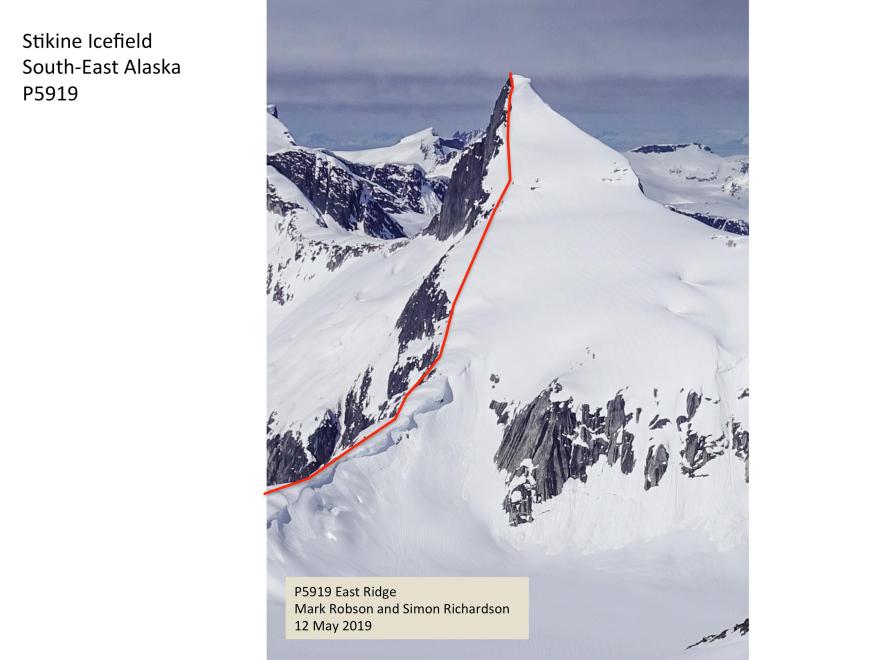OASIS PEAK EXPEDITION 2019
Stikine Icefield, Alaska
Extracts from full report (pdf) Oasis Peak Expedition:
“The Sitikine straddles the USA-‐Canada border and lies between the Stikine River and the coastal waters of Frederick Sound in South-‐East Alaska. Spectacular granite peaks rise from a myriad of glaciers that cover an area equivalent in size to Wales. It would be the perfect alpinist’s playground if it were not for the weather, which is truly atrocious. To the west lies the Gulf of Alaska, a malevolent, tempestuous sea responsible for most of the precipitation that strikes the Pacific Coast of North America. Consequently the Stikine is one of the wettest places on earth and as been described as a ‘rain icecap’. Unsurprisingly this makes climbing in the area extremely challenging, and the Stikine Icecap is rarely visited by climbers. It is one of the wildest and least known mountain ranges in the world.”
“As far as we could tell, we would be the first documented climbing expedition to visit the glacier for over 40 years. The expedition had two objectives:
1. Make the first ascent of West Face of Oasis Peak
2. Explore unclimbed mountains north and west of Oasis Peak.”
“We flew into the North Baird Glacier from the fishing village of Petersburg by helicopter on 30 April. As soon as we arrived it was immediately clear that any technical climbing was unlikely. All the mountains were heavily snowed up, draped with enormous cornices and unstable snow mushrooms. But more significantly, it was not freezing at night and there were (literally) hundreds of avalanches. So after a week we abandoned plans for Oasis Peak and moved our camp down glacier to where we could access the North Arm of the North Baird Glacier. Finally, on 9 May, the weather improved enough for us to climb through the icefall guarding entry to the North Arm. We were probably the first mountaineers ever to visit this part of the icecap and were surrounded by over a dozen unclimbed peaks. The big prize however was P7180 (also known as Hyder Peak), which lay 8km away at the head of the adjacent Dawes Glacier.”

“During the trip we were also successful in making first ascents of P5910, P5720, P5800 and the shapely P5919 before flying out on 12 May. Overall, we only had three days when it was not raining and the visibility was good enough to climb. Snow conditions remained soft throughout, avalanches took place constantly and we experienced considerable cornice difficulties. Despite all of these challenges, it was an extremely rewarding expedition. The climbing was rarely technical, but picking safe lines and negotiating the beautiful corniced summit ridges made it very exacting……… And above all, when the rain stopped and the fog lifted, we were treated to some of the most beautiful and pristine mountain landscape either of us had ever seen.”

For full, detailed report, see link above.
Also available:
Local (Alaska) Radio interview
Rock and Ice magazine interview